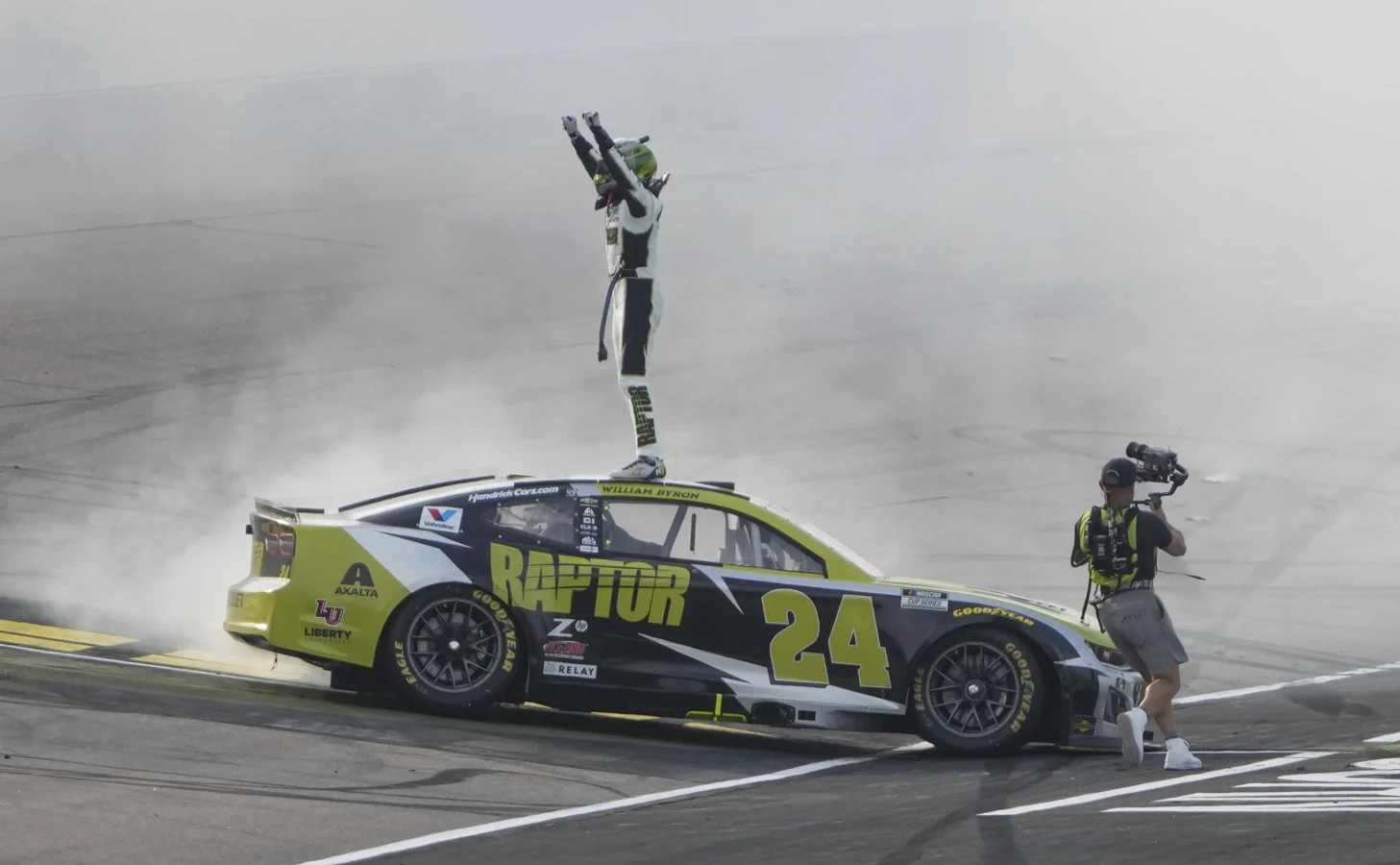Chase Elliott has openly addressed his reputation for tracking on-track interactions with fellow drivers, revealing how the Chase Elliott NASCAR payback list shapes his approach to racing in the NASCAR Cup Series. During a candid interview, Elliott explained the reasons behind his strategic racing style and the importance of remembering both good and bad moments on the track.
Elliott’s Code: Racing Others as They Race Him
Chase Elliott, winner of the 2020 NASCAR Cup Series championship, made it clear in an August 2017 interview that he mentally keeps note of how other competitors treat him throughout the season. The subject was brought up during a Q&A session as part of Jeff Gluck’s 12 Questions series, where Elliott addressed whether he maintains a mental ledger of fellow drivers who owe him, or vice versa.
“I definitely do, 100 percent. Racing is something that always comes full circle,” Chase Elliott said.
Elliott described the cyclical nature of motorsports, expressing that when another driver extends courtesy early in a race, he usually responds in kind if the situation calls for it. However, he emphasized that as a race nears its conclusion, the competitive intensity rises, leaving less room for favors or forgiveness among drivers.
“We all understand that we’ve got to race and it’s hard to be as forgiving toward the end toward the end of the races because you’ve trying to fight for what you have,” he added.
He further explained that yielding to a faster car at the start isn’t merely about sportsmanship—it’s a calculated move. Elliott summed up this philosophy by stating his attentiveness to racing etiquette among competitors.
“It’s something that we’re all kind of conscious about as the race goes on, so I definitely pay attention to that and try to race guys how they race me.”
Highlights from Elliott’s Turbulent 2025 Season
The 2025 NASCAR season has featured numerous high-profile incidents for Chase Elliott. At the Circuit of the Americas, Elliott’s race was disrupted almost immediately by contact from Ross Chastain, who spun Elliott in the very first turn after Elliott started third. The resulting damage required a quick visit to the pits for a toe link repair during Stage 1. Undeterred, Elliott benefited from a shrewd pit strategy from crew chief Alan Gustafson, which enabled him to regain lost ground and ultimately finish in fourth place. While Elliott criticized the aggressiveness displayed by others after the event, he chose not to delve into specifics before reviewing race footage.
Shortly before this incident, Elliott competed at Atlanta Motor Speedway in the Ambetter Health 400 on February 23. On Lap 150, a sequence initiated by contact between Ricky Stenhouse Jr. and Chase Briscoe led Stenhouse’s car to strike Elliott, sending him into the wall and causing significant damage to his right-rear toe link. The chaos did not end there—Elliott’s damaged machine subsequently collided with Corey LaJoie and Brad Keselowski, resulting in both drivers being forced to retire from the event. Elliott, despite the setback, managed to finish in 20th position, while LaJoie and Keselowski finished 38th and 39th, respectively.
Tensions increased further on August 4 during the Iowa Corn 350, where Elliott was involved in a series of intra-team incidents with his Hendrick Motorsports teammate Kyle Larson. The pair made contact twice in the closing laps, disrupting both their runs; Larson fell from fifth to 12th immediately after the initial contact, finishing 28th, while Elliott completed the race in 14th.
Elliott’s Pursuit of Consistency Ahead of the Playoffs
Amidst a turbulent season marked by aggressive confrontations and high-speed drama, Chase Elliott has shown a marked improvement in performance when compared with the prior year. He broke a winless streak with a significant victory at Atlanta, cementing his spot in the NASCAR playoffs. Since securing his place, Elliott, representing Hendrick Motorsports, has consistently featured near the front of the field.
Over his last seven starts, Elliott achieved four top-10 finishes, including three runs inside the top five, not including his critical Atlanta win. It is a sharp turnaround from his 2024 campaign, where he endured a significant slump and struggled for results.
Elliott credits much of this turnaround not just to his talent and racecraft, but also to elements beyond his control such as timing and fortune. Reflecting on his season in an interview with Frontstretch, he acknowledged that circumstance and resilience have played a role in his recent form.
“It’s not like we haven’t gotten in wrecks this year…they just happened to be in a position where we could kind of patch it together and keep going,” Elliott said.
Chase Elliott stressed the need to focus on controllable elements, while accepting that racing also involves unpredictability and misfortune, regardless of preparation or strategy. He continues to race with intensity, well aware that the competition grows fiercer as the playoffs approach.
What Elliott’s Approach Means for NASCAR
Chase Elliott’s willingness to openly speak about his mental payback list and race-day philosophy has sparked ongoing discussion throughout the NASCAR community. As this season’s playoffs draw near, Elliott’s reputation for racing others the way they have raced him could influence both his race-day strategies and the responses of fellow drivers. With recent incidents involving Ross Chastain, Ricky Stenhouse Jr., Chase Briscoe, Corey LaJoie, Brad Keselowski, and teammate Kyle Larson, Elliott’s commitment to fairness—and calculated retribution—will be tested under the pressures of postseason racing. Fans and competitors alike will be watching closely to see how Elliott’s approach shapes the remaining races and impacts the dynamics within Hendrick Motorsports and the broader NASCAR Cup Series.
